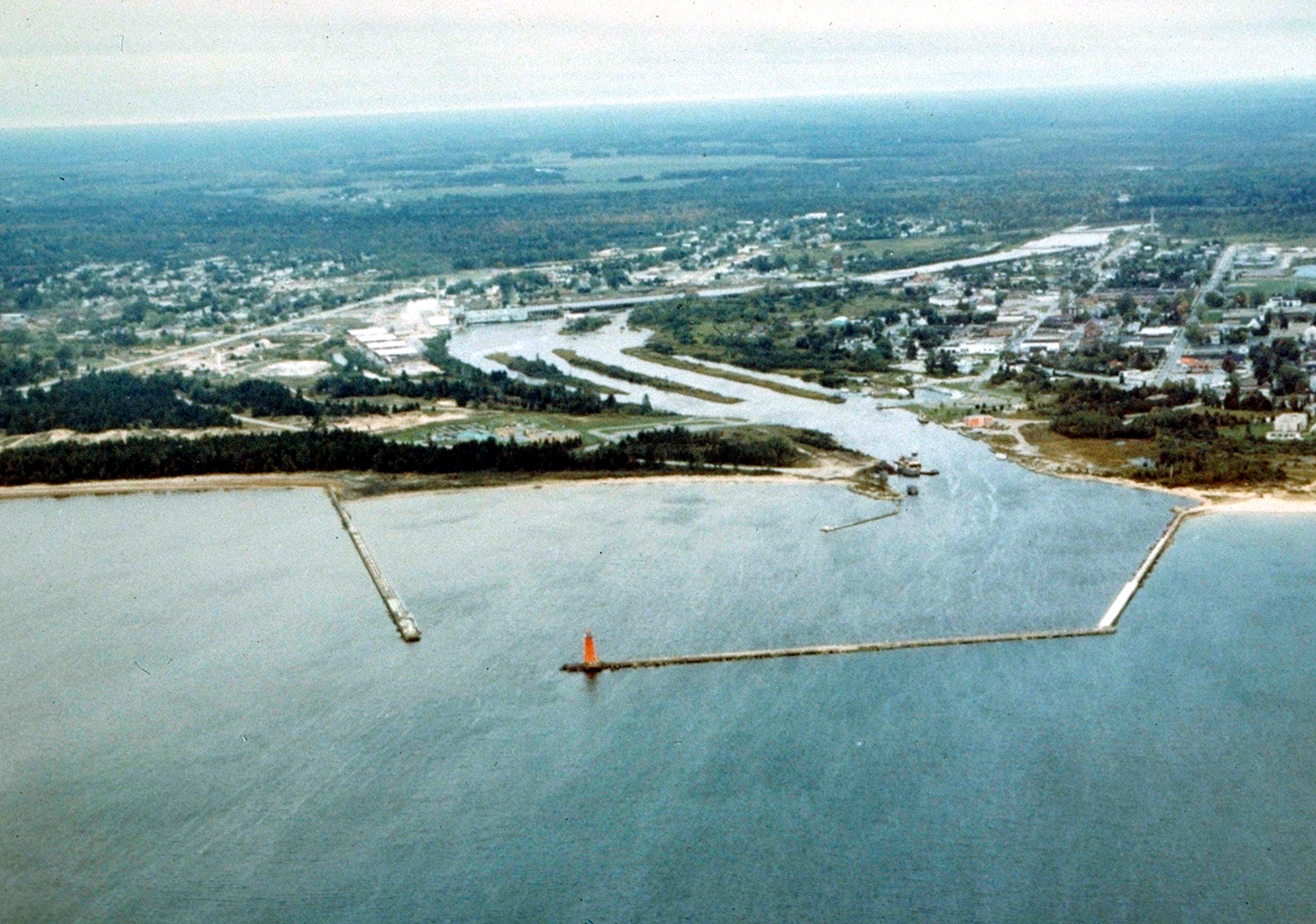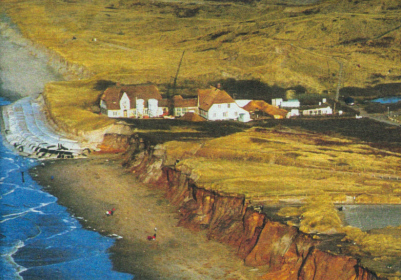|
In Situ Capping Of Subaqueous Waste
In-Situ Capping (ISC) of Subaqueous Waste is a non-removal environmental remediation, remediation technique for contaminated sediment that involves leaving the waste in place and isolating it from the environment by placing a layer of soil and/or material over the contaminated waste as to prevent further spread of the contaminant. In-situ capping provides a viable way to remediate an area that is contaminated. It is an option when Environmental remediation#Pump and treat, pump and treat becomes too expensive and the area surrounding the site is a low energy system. The design of the cap and the characterization of the surrounding areas are of equal importance and drive the feasibility of the entire project. Numerous successful cases exist and more will exist in the future as the technology expands and grows more popular. In-situ capping uses techniques developed in chemistry, biology, geotechnical engineering, environmental engineering, and environmental geotechnical engineering. In ... [...More Info...] [...Related Items...] OR: [Wikipedia] [Google] [Baidu] |
Environmental Remediation
Environmental remediation deals with the removal of pollution or contaminants from environmental media such as soil, groundwater, sediment, or surface water. Remedial action is generally subject to an array of regulatory requirements, and may also be based on assessments of human health and ecological risks where no legislative standards exist, or where standards are advisory. Remediation standards In the United States, the most comprehensive set of Preliminary Remediation Goals (PRGs) is from the Environmental Protection Agency (EPA) ''Regional Screening Levels'' (RSLs). A set of standards used in Europe exists and is often called the Dutch standards. The European Union (EU) is rapidly moving towards Europe-wide standards, although most of the industrialised nations in Europe have their own standards at present. In Canada, most standards for remediation are set by the provinces individually, but the Canadian Council of Ministers of the Environment provides guidance at a federa ... [...More Info...] [...Related Items...] OR: [Wikipedia] [Google] [Baidu] |
Resource Conservation And Recovery Act
The Resource Conservation and Recovery Act (RCRA), enacted in 1976, is the principal federal law in the United States governing the disposal of solid waste and hazardous waste.United States. Resource Conservation and Recovery Act. , , ''et seq.,'' October 21, 1976. History and goals Congress enacted RCRA to address the increasing problems the nation faced from its growing volume of municipal and industrial waste. RCRA was an amendment of the Solid Waste Disposal Act of 1965. The act set national goals for: * Protecting human health and the natural environment from the potential hazards of waste disposal. * Energy conservation and natural resources. * Reducing the amount of waste generated, through source reduction and recycling * Ensuring the management of waste in an environmentally sound manner. The RCRA program is a joint federal and state endeavor, with the U.S. Environmental Protection Agency (EPA) providing basic requirements that states then adopt, adapt, and enforce. ... [...More Info...] [...Related Items...] OR: [Wikipedia] [Google] [Baidu] |
Manistique River
The Manistique River ( ') is a U.S. Geological Survey. National Hydrography Dataset high-resolution flowline dataThe National Map, accessed December 19, 2011 river in the U.S. state of Michigan that winds southward through the central Upper Peninsula from its headwaters near Lake Superior to its mouth in Lake Michigan. It drains approximately of the Upper Peninsula, including most of Schoolcraft County and small portions of Alger County, Delta County, Luce County, and Mackinac County. The river rises at the outlet of Manistique Lake in the southwest corner of Luce County, and after flowing through the Seney National Wildlife Refuge, empties into Lake Michigan at Manistique, Michigan. M-77, a north–south highway, serves much of the Manistique River's drainage and crosses the river and its tributaries several times. Boreal forest wetlands The drainage of the Manistique River is very flat and sandy. The river is not characterized by rapids or waterfalls. Instead, it wriggl ... [...More Info...] [...Related Items...] OR: [Wikipedia] [Google] [Baidu] |
Polychlorinated Biphenyl
Polychlorinated biphenyls (PCBs) are highly carcinogenic chemical compounds, formerly used in industrial and consumer products, whose production was banned in the United States by the Toxic Substances Control Act in 1979 and internationally by the Stockholm Convention on Persistent Organic Pollutants in 2001. They are organic chlorine compounds with the formula C12 H10−''x'' Cl''x''; they were once widely used in the manufacture of carbonless copy paper, as heat transfer fluids, and as dielectric and coolant fluids for electrical equipment. Because of their longevity, PCBs are still widely in use, even though their manufacture has declined drastically since the 1960s, when a host of problems were identified. With the discovery of PCBs' environmental toxicity, and classification as persistent organic pollutants, their production was banned by United States federal law in 1978, and by the Stockholm Convention on Persistent Organic Pollutants in 2001. The International Agency ... [...More Info...] [...Related Items...] OR: [Wikipedia] [Google] [Baidu] |
Superfund Site
Superfund sites are polluted locations in the United States requiring a long-term response to clean up hazardous material contaminations. They were designated under the Comprehensive Environmental Response, Compensation, and Liability Act (CERCLA) of 1980. CERCLA authorized the United States Environmental Protection Agency (EPA) to create a list of such locations, which are placed on the National Priorities List (NPL). The NPL guides the EPA in "determining which sites warrant further investigation" for environmental remediation. , there were 1,329 Superfund sites on the National Priorities List in the United States. Forty-three additional sites have been proposed for entry on the list, and 452 sites have been cleaned up and removed from the list. New Jersey, California, and Pennsylvania have the most sites. Lists of Superfund sites U.S. states and federal district * Alabama * Alaska * Arizona * Arkansas * California * Colorado * Connecticut * Delaware * District of Columbia ... [...More Info...] [...Related Items...] OR: [Wikipedia] [Google] [Baidu] |
General Motors
The General Motors Company (GM) is an American Multinational corporation, multinational Automotive industry, automotive manufacturing company headquartered in Detroit, Michigan, United States. It is the largest automaker in the United States and was the largest in the world for 77 years before losing the top spot to Toyota in 2008. General Motors operates manufacturing plants in eight countries. Its four core automobile brands are Chevrolet, Buick, GMC (automobile), GMC, and Cadillac. It also holds interests in Chinese brands Wuling Motors and Baojun as well as DMAX (engines), DMAX via joint ventures. Additionally, GM also owns the BrightDrop delivery vehicle manufacturer, GM Defense, a namesake Defense vehicles division which produces military vehicles for the United States government and military; the vehicle safety, security, and information services provider OnStar; the auto parts company ACDelco, a GM Financial, namesake financial lending service; and majority ownership in t ... [...More Info...] [...Related Items...] OR: [Wikipedia] [Google] [Baidu] |
Massena (town), New York
Massena is a town in St. Lawrence County, New York, United States. Massena is along the county's northern border, just south of the St. Lawrence River and the Three Nations Crossing of the Canada–United States border. The population was 12,883 at the 2010 census. The town of Massena contains a village also named Massena. History Massena was one of the first towns settled in St. Lawrence county, but was not incorporated until 1802 when it was formed from the town of Lisbon. The town and its village are named after André Masséna, a general and Marshal to Napoleon during the Napoleonic Wars. The town suffered natural disasters in the 1944 Cornwall-Massena earthquake and in the January 1998 North American ice storm. In 1928 it was the scene of the antisemitic Massena blood libel. Economy Up until the 1880s, the town was predominantly agricultural, mainly home to butter and cheese production. Aside from the dairy farmers (and the blacksmiths, craftsmen, and shopkeepe ... [...More Info...] [...Related Items...] OR: [Wikipedia] [Google] [Baidu] |
Pelagic
The pelagic zone consists of the water column of the open ocean, and can be further divided into regions by depth (as illustrated on the right). The word ''pelagic'' is derived . The pelagic zone can be thought of as an imaginary cylinder or water column between the surface of the sea and the bottom. Conditions in the water column change with depth: pressure increases; temperature and light decrease; salinity, oxygen, micronutrients (such as iron, magnesium and calcium) all change. Marine life is affected by bathymetry (underwater topography) such as the seafloor, shoreline, or a submarine seamount, as well as by proximity to the boundary between the ocean and the atmosphere at the ocean surface, which brings light for photosynthesis, predation from above, and wind stirring up waves and setting currents in motion. The pelagic zone refers to the open, free waters away from the shore, where marine life can swim freely in any direction unhindered by topographical constraints. Th ... [...More Info...] [...Related Items...] OR: [Wikipedia] [Google] [Baidu] |
Epibenthic
Benthos (), also known as benthon, is the community of organisms that live on, in, or near the bottom of a sea, river, lake, or stream, also known as the benthic zone.Benthos from the Census of Antarctic Marine Life website This community lives in or near marine or freshwater sedimentary environments, from s along the , out to the , and t ... [...More Info...] [...Related Items...] OR: [Wikipedia] [Google] [Baidu] |
Bioturbation
Bioturbation is defined as the reworking of soils and sediments by animals or plants. It includes burrowing, ingestion, and defecation of sediment grains. Bioturbating activities have a profound effect on the environment and are thought to be a primary driver of biodiversity. The formal study of bioturbation began in the 1800s by Charles Darwin experimenting in his garden. The disruption of aquatic sediments and terrestrial soils through bioturbating activities provides significant ecosystem services. These include the alteration of nutrients in aquatic sediment and overlying water, shelter to other species in the form of burrows in terrestrial and water ecosystems, and soil production on land.Shaler, N. S., 1891, The origin and nature of soils, in Powell, J. W., ed., USGS 12th Annual report 1890-1891: Washington, D.C., Government Printing Office, p. 213-45. Bioturbators are deemed ecosystem engineers because they alter resource availability to other species through the physical ch ... [...More Info...] [...Related Items...] OR: [Wikipedia] [Google] [Baidu] |
Geosynthetics
Geosynthetics are synthetic products used to stabilize terrain. They are generally polymeric products used to solve civil engineering problems. This includes eight main product categories: geotextiles, geogrids, geonets, geomembranes, geosynthetic clay liners, geofoam, geocells and geocomposites. The polymeric nature of the products makes them suitable for use in the ground where high levels of durability are required. They can also be used in exposed applications. Geosynthetics are available in a wide range of forms and materials. These products have a wide range of applications and are currently used in many civil, geotechnical, transportation, geoenvironmental, hydraulic, and private development applications including roads, airfields, railroads, embankments, retaining structures, reservoirs, canals, dams, erosion control, sediment control, landfill liners, landfill covers, mining, aquaculture and agriculture. History Inclusions of different sorts mixed with soil have been ... [...More Info...] [...Related Items...] OR: [Wikipedia] [Google] [Baidu] |





